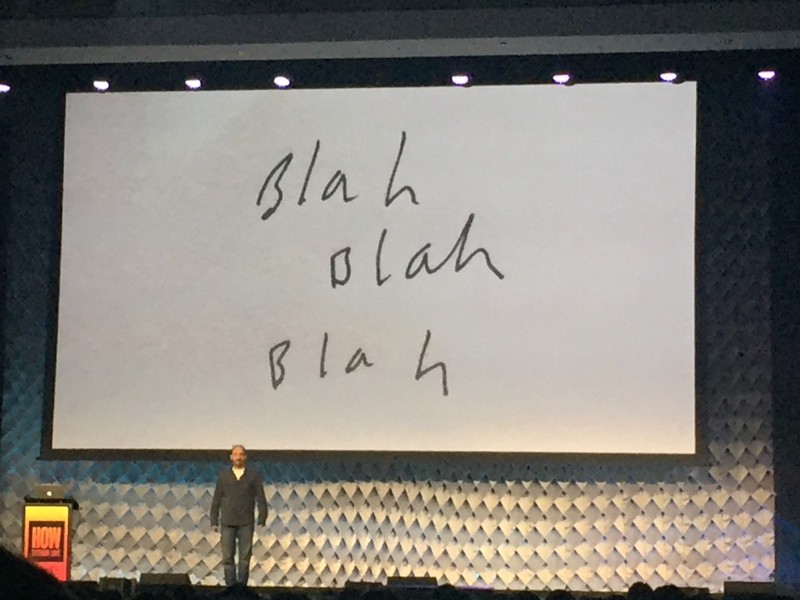Our greatest tool requires no computer knowledge.
We have all been there. Seated passively in a dimly lit room, a giant illuminated screen and a presenter with a laser pointer playing the supporting role of narrator while reading the novel-length slides word for word. A typical PowerPoint experience–too much copy, not enough connection.
Last Spring, I attended the HOW Design Live conference, and, as you would expect, most of the presentations were very well designed with clean type and creative taglines—all largely engaging and enjoyable. But, looking back, a year later, the presentation that I remember most vividly, had very few visual prompts, and the type was far from clear and concise. The content displayed on the slides was next to nothing. One or two words handwritten in strokes that would make a grade school handwriting teacher cringe. Not a lot of copy, but a whole lot of connection. The story was the hero, and the tool, be it PowerPoint or Keynote, was just the vehicle.

James Victore at HOW Design Live 2016
The experience made me reevaluate the Power of PowerPoint and brought me to realize that your most valuable tool requires no computer knowledge whatsoever.
The medium is secondary. The message is the master.
What made these presentations so engaging was not the lack of words on the screen, but rather the story told by the presenters. A successful presentation, like any other form of communication, is about the message, not the medium. It’s about building the story from start to finish and finding ways to engage with the audience on a personal level.
And engaging with your audience doesn’t require a beautifully designed PowerPoint. But you must meet your audience where they are. You must make it less about you, and more about them.
Your audience may be captive, but that does not mean they are easily captured.
If you Say what you mean, mean what you say, the story will write itself.
We are often amazed by the great leaders and their abilities to capture an audience with their inspirational words and soaring rhetoric. We have all experienced it in Martin Luther King’s powerful speeches or listening to Steve Jobs clever comments.
They, like many other leaders, were great communicators who knew how to engage with their audience and get people to believe what they were saying. But they weren’t just saying it, they also believed it. Every sentence. Every word. They were speaking from their heart first and foremost. The rhetoric and tools were just there to support what they already so strongly believed.
So, it turns out that the power of PowerPoint has very little to do with the product itself, and everything to do with the person holding the clicker.
PowerPoint can be that glaring screen that’s keeping your audience from falling asleep at the back of the room, or PowerPoint can serve as a resource in telling the story. But it is up to the teller, not the tool, to craft a message that will resonate with the audience.




